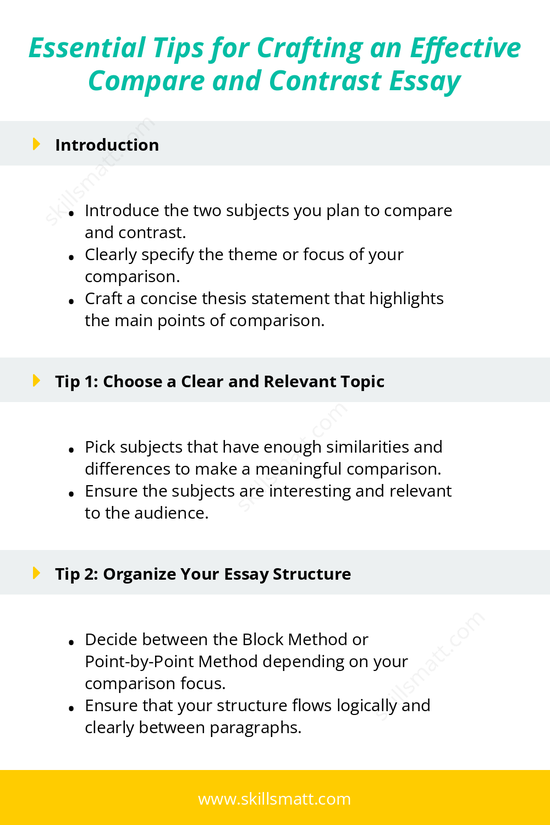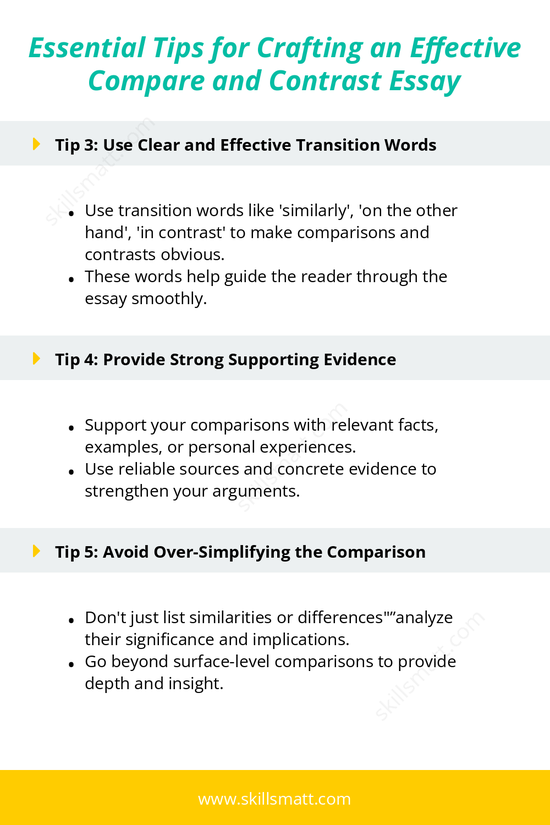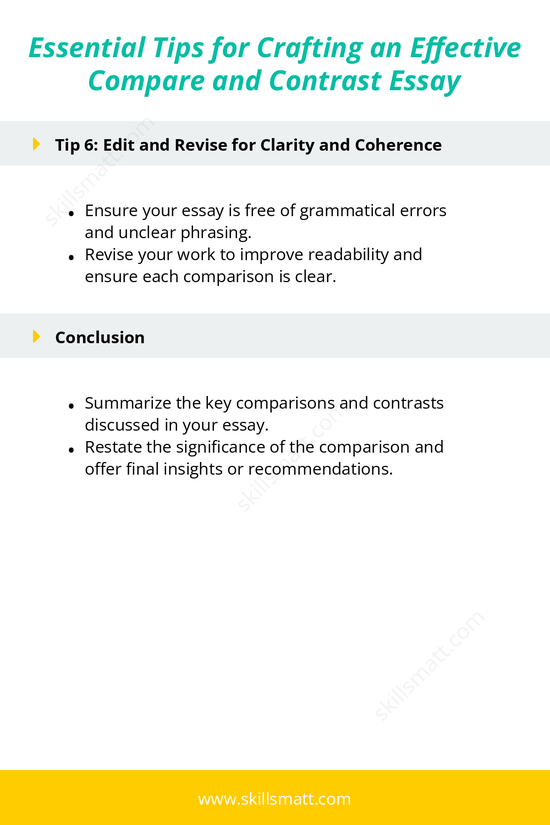Essential Tips for Crafting an Effective Compare and Contrast Essay
- Introduction
- Introduce the two subjects you plan to compare and contrast.
- Clearly specify the theme or focus of your comparison.
- Craft a concise thesis statement that highlights the main points of comparison.
- Tip 1: Choose a Clear and Relevant Topic
- Pick subjects that have enough similarities and differences to make a meaningful comparison.
- Ensure the subjects are interesting and relevant to the audience.
- Tip 2: Organize Your Essay Structure
- Decide between the Block Method or Point-by-Point Method depending on your comparison focus.
- Ensure that your structure flows logically and clearly between paragraphs.
- Tip 3: Use Clear and Effective Transition Words
- Use transition words like 'similarly', 'on the other hand', 'in contrast' to make comparisons and contrasts obvious.
- These words help guide the reader through the essay smoothly.
- Tip 4: Provide Strong Supporting Evidence
- Support your comparisons with relevant facts, examples, or personal experiences.
- Use reliable sources and concrete evidence to strengthen your arguments.
- Tip 5: Avoid Over-Simplifying the Comparison
- Don’t just list similarities or differences—analyze their significance and implications.
- Go beyond surface-level comparisons to provide depth and insight.
- Tip 6: Edit and Revise for Clarity and Coherence
- Ensure your essay is free of grammatical errors and unclear phrasing.
- Revise your work to improve readability and ensure each comparison is clear.
- Conclusion
- Summarize the key comparisons and contrasts discussed in your essay.
- Restate the significance of the comparison and offer final insights or recommendations.



